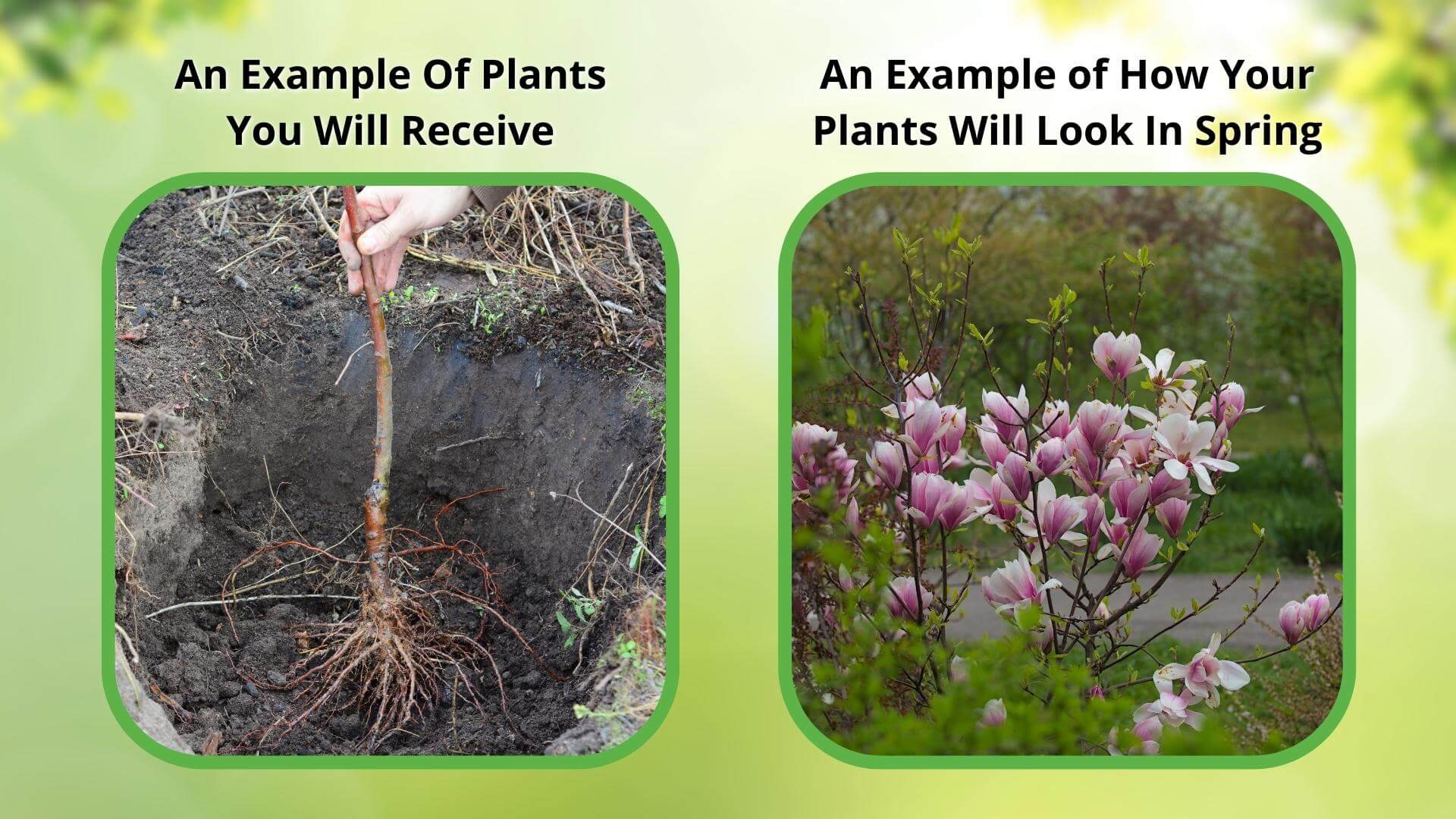Couldn't load pickup availability
🌸When you add 1 plant to cart, it automatically adds the free one
Prunus Persica - Dwarf Patio Peach
The Prunus Persica Plant (Dwarf Patio Peach) truly lives up to its name. This tree is tiny by tree standards, reaching only 6 ft tall at maximum and 4 ft on average. Its best season is spring, but it is an early-season plant, so you can enjoy its blooms starting in March.
This pink beauty is perfect for an accent plant in a small space, or as a low border plant. Flanking your home’s walkway with this peach tree is sure to be a fabulous show come springtime.
Prunus Persica Plant Details (Dwarf Patio Peach)
Family: Rosaceae
Light Requirement: Full sun
Water Needs: Moderate
Height: 6-4 ft
Spread: 6-4 ft
Soil Preference: Moist, well-drained, Acidic
Season of Interest: Spring
Flower Color: Pink, Red
Fruit: Peach
Wildlife Value: Bees, Butterflies
Notable Characteristics of Prunus Persica Plant
The Dwarf Patio Peach Tree is a cultivar of the Peach Tree native to China. Peaches were spread to other parts of the world via trade routes like the Silk Road, and this cultivar followed.
It is popular for its small size and was mainly cultivated for ornamental use, because though its fruit is large and fleshy, it is inedible due to its poor taste. It is prized for its small size because it fits perfectly on patios.
Its leaves are long and narrow, and have a lovely, deep reddish hue that holds its color through the whole growing season. The branches are thick and woody, packed tightly with the dense foliage and large flowers surrounding the whole branch. The pink flowers and their pink stamen pop beautifully against the red leaves.
Landscape and Maintenance of Prunus Persica
This showy, pink tree is unfortunately a bit high maintenance. The Dwarf Patio Peach prefers moist, well drained soil but cannot tolerate waterlogged soil. It is also vulnerable to many diseases, including peach scab, peach leaf curl, leaf spots, bacterial canker, root rot and mildew.
In addition, it can be infested by many insects including peach twig, borer, scale and spider mites who can eat away at the foliage and wood. The colors and size of the flowers can also be compromised by cold weather or late frosts. However, this magnificent tree packs a large punch despite its size, and is well worth including in your garden scape.
This Is How Your Plants Will Look upon Delivery

Bloom Season
Spring
Height at Maturity
Under 25 Feet
Care
Water apricot trees deeply but infrequently, allowing the soil to dry slightly between watering. Prune annually in late winter to maintain shape and remove dead wood. Fertilize in early spring with balanced nutrients to promote healthy growth and fruit production.
Plant Reproduction
Patio Peach tree spreads through seed dispersal and grafting.
How to Grow and Care for Fruit Trees
Fruit trees are a rewarding addition to any landscape, offering fragrant blossoms in spring and fresh, homegrown harvests in summer or fall. Popular varieties like apple, peach, pear, and plum thrive in full sun and well-drained, nutrient-rich soil. Choose trees suited to your USDA zone, and plant in early spring or fall for the best root development.
Dig a hole twice as wide as the root ball and deep enough so the root flare sits just above the soil line. Backfill with native soil, water deeply, and apply mulch around the base—keeping it a few inches from the trunk—to retain moisture and suppress weeds. Water regularly during the first growing season, especially during dry spells.
Prune annually to shape the tree, improve air circulation, and boost fruit production. Fertilize in early spring with a balanced or fruit-specific fertilizer. With proper planting, seasonal care, and a little patience, fruit trees will reward you with beauty, shade, and bountiful harvests year after year.
Shipping date depends on the date displayed and chosen when you order from the product's page.
We only accept returns on plants verified dead. If you think your plants have died, we offer a 1 year warranty, please use use this File a Claim Link to verify dead plants and start with return warranty process.


Caring Tips
How do I care for my Dwarf Patio Peach?
Each box contains detailed care instructions and information about your product. But here's the basics.
Care Tips
Water apricot trees deeply but infrequently, allowing the soil to dry slightly between watering. Prune annually in late winter to maintain shape and remove dead wood. Fertilize in early spring with balanced nutrients to promote healthy growth and fruit production.
Light Requirements
Apricot fruit trees thrive in full sun, requiring 6 to 8 hours of sunlight daily. They favor a sunny spot with well-drained soil to ensure healthy growth, abundant fruit production, and optimal ripening of the apricots.
Hardy Planting Zones
5 • 6 • 7 • 8 • 9
The Dwarf Patio Peach Tree I received was top-notch in every way—strong roots, vibrant leaves, and an ideal size for patios. TN Nursery delivered exactly what I wanted.
I was impressed with my Dwarf Patio Peach Tree. It was healthy, compact, and arrived in perfect shape thanks to TN Nursery’s excellent packaging.
The Dwarf Patio Peach Tree from TN Nursery was outstanding. It arrived fresh, fragrant, and ready to plant. I’m excited for the beautiful blossoms and fruit to come.
The Dwarf Patio Peach Tree I purchased was remarkable. Its structure was strong, the foliage vibrant, and it transplanted seamlessly into my garden.
TN Nursery shipped me a premium Dwarf Patio Peach Tree that was carefully packaged and in excellent condition. It’s already showing new growth after just a short time.



